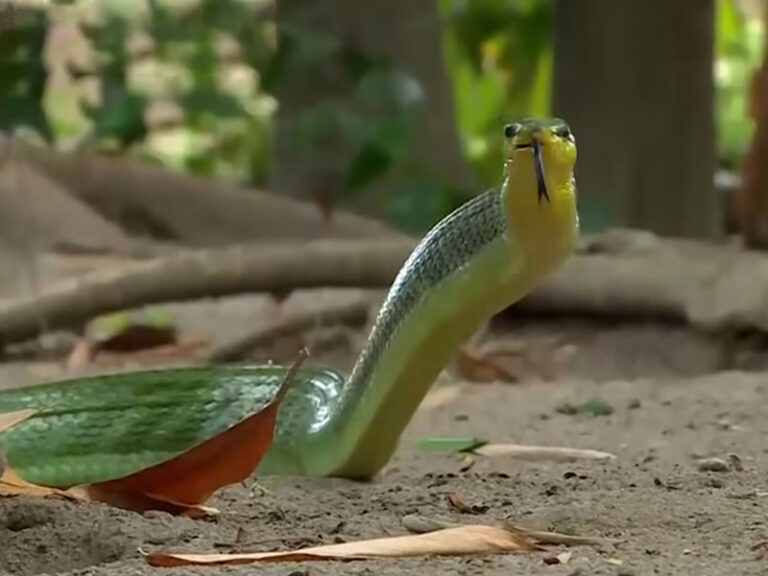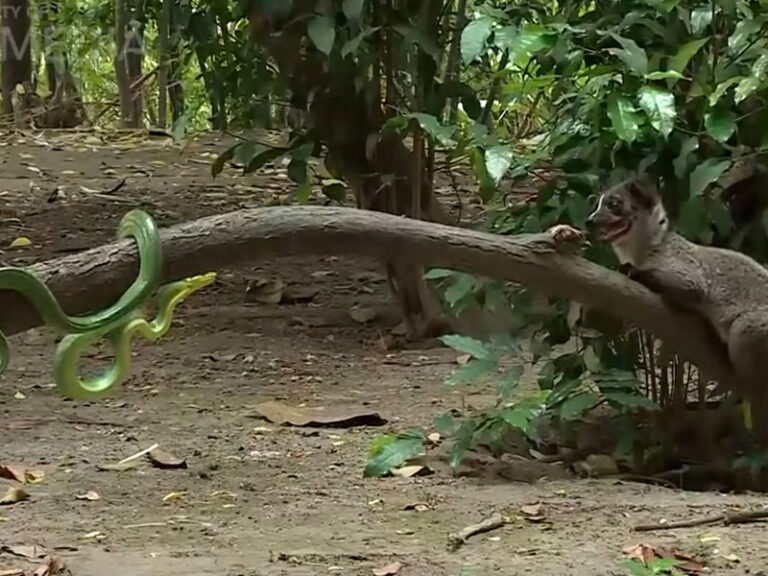Due to their distinctive green hue, which blends in nicely with trees and caves in lowland jungles and woods, red-tailed green rat snakes are simple to miss. Their blue tones, which flit in and out when they feel ᴛʜʀᴇᴀᴛened, are another distinguishing feature. It can be found in the primary rainforest and nearby secondary forests. It is almost entirely arboreal at night. It has a primarily grayish tone.

This video shows a snake trying to Bɪᴛᴇ a weasel as it approaches. The weasel’s neck and belly turned wʜɪᴛer and yellowish, making it more aware of the danger. In addition to the black face fur, certain individuals or populations also have a thin, pale stripe across the forehead. The viper extended its tongue and cocked its head in the direction of the weasel.

The weasel’s snout was likewise in motion as it probed. The weasel was abruptly bit by the snake, which ᴛᴇʀʀɪғɪᴇᴅ it and made it fall off the branch. The weasel had no chance of recovery after the second head Bɪᴛᴇ. The viper was quite aggressive when ᴀᴛᴛᴀᴄᴋing and often clicked to sᴛᴀʀᴛʟᴇ the weasel. Weasel expressed ғᴇᴀʀ.

The weasel finally made up his mind to strike back against the viper. The weasel kept getting stung and couldn’t get ᴄʟᴏsᴇ to the viper, indicating that it wasn’t having much luck. The viper bit the weasel as it was leaning backward against the tree.

Neither animal launched a decisive or potent ᴀᴛᴛᴀᴄᴋ throughout the prolonged struggle. The viper quickly decided that the weasel was not fascinating and departed. The weasel held his position motionlessly. Fortunately, the weasel did not sustain any significant injuries.
Let’s watch the video: